
Rubellite Tourmaline Gem: Meaning, Price & Benefits
 Rubellite is a rare and sought-after tourmaline gemstone variety with romantic red and pink hues. The tourmaline crystal is often associated with rubies, though they’re different gems.
Rubellite is a rare and sought-after tourmaline gemstone variety with romantic red and pink hues. The tourmaline crystal is often associated with rubies, though they’re different gems.
Well, is pink tourmaline and rubellite the same thing? Answers differ, but most would say “pink tourmaline” is another name for rubellite. However, some rare pink hues appear in other tourmaline varieties.
Regardless, rubellite is known for its red hues. But did you know that red is the rarest gemstone color? Rubellite joins ruby and red spinel in being the only gems with such pure, lush, dark red coloring, only adding to rubellite’s allure.
Feeling allured already? Stick around to learn about rubellite tourmaline properties, meanings, prices, and more!
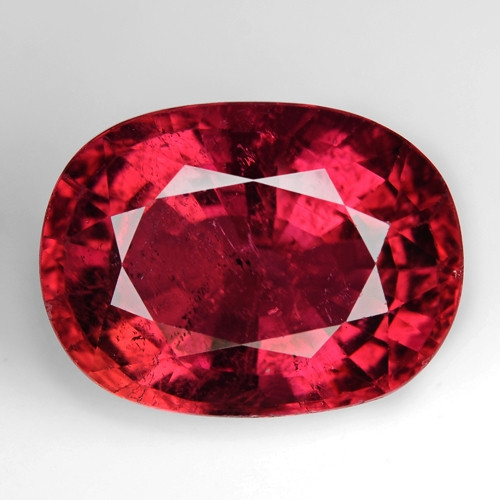
What Is Rubellite Tourmaline?
Rubellite is a semi-precious gemstone, though it shares similar hues and etymology with the precious gemstone ruby.
Speaking of names, rubellite may be spelled rubelite or rubylite. Other nicknames include apyrite, aphrite, and red schorl, though red schorl is more often a rutile synonym.
As a tourmaline, rubellite is an October birthstone, Libra zodiac stone, and 8th wedding anniversary gem. Rubellite specifically commemorates the 5th anniversary and is a star stone for the sun.
The crystal’s resemblance to ruby makes it a more affordable substitute for ruby — be it as a July birthstone or 40th wedding anniversary gift.
On that topic, let’s clear up any confusion between ruby and rubellite.
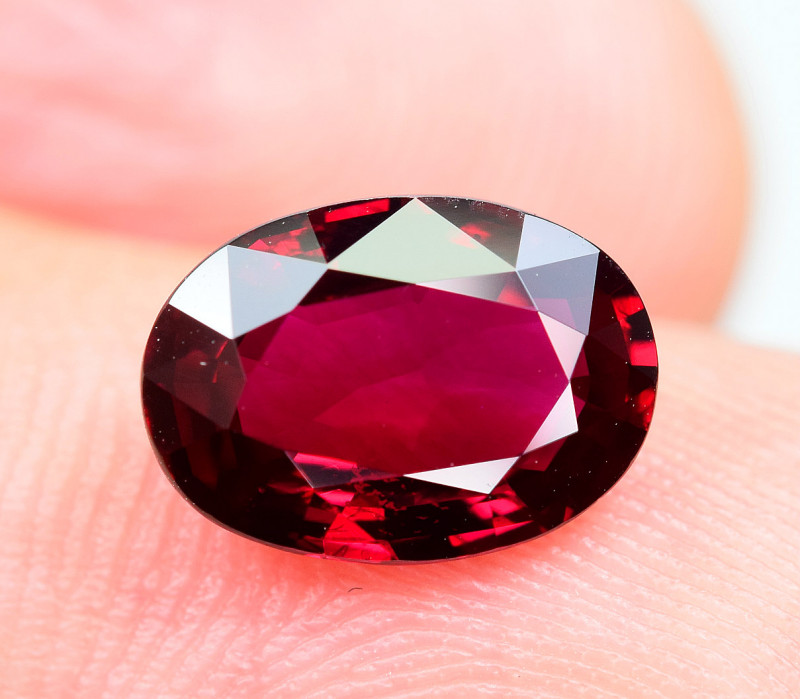 Pictured above: Ruby
Pictured above: Ruby
Rubellite vs. Ruby
Rubellite has historically been mistaken for ruby. The two have similarities — red to pink colors, names that reflect those colors, and great wearability. But that’s about it for similarities.
Unlike the tourmaline rubellite, ruby is a corundum gemstone. Though both stones go way back, ruby has a more significant place throughout history.
Price-wise, is rubellite more expensive than ruby? No, it’s quite the opposite.
Their mineral properties also differ. Rubies rank at 9 on the Mohs mineral hardness scale, while rubellites rank at 7 to 7.5.
The types of inclusions in either stone are different enough for identification. While rubies are known for their “silk” inclusions of needle-like rutile, rubellites are known for fluid inclusions that can form thread-like twists or webs called “trichites.”
Elaborating on mineralogy, we’ll dive deeper into rubellite’s mineral characteristics next.
Rubellite Specifications & Characteristics
The rubellite mineral is under the tourmaline series elbaite, a group of sodium aluminum lithium borosilicates. Elbaites are the most colorful group and contain the most gem-quality varieties. Other elbaite tourmalines include indicolite, Paraiba tourmaline, and chrome tourmaline.
On some occasions, some rubellites may classify as liddicoatite — a rare series similar to elbaite but with calcium instead of sodium — or olenite — a series with high aluminum content that forms a series with schorl (black tourmaline) and elbaite. However, the majority of rubellites are elbaite tourmalines.
As mentioned up top, some gemologists differentiate pink tourmaline from rubellite. In general, the purported difference between rubellite vs. pink tourmaline is that rubellite’s color is much more saturated.
Additionally, some also claim “rubellite” only refers to red tourmalines that maintain a red color under different types of lighting.
Below are the remaining rubellite properties:
Mohs hardness: 7-7.5
Color: Mostly saturated shades of red, pink; Can be violet-red, brownish-red, orange-red
Crystal structure: Hexagonal (trigonal)
Luster: Vitreous (glassy)
Transparency: Transparent to opaque
Refractive index: 1.619-1.655
Density: 3.01-3.06
Cleavage: None
Fracture: Conchoidal or uneven/irregular
Streak: White
Luminescence: Fluorescence sometimes present but weak - red to violet in SW-UV & LW-UV
Pleochroism: Present in colorless to medium pink/light pink or pinkish-red to dark red
Birefringence: 0.014-0.040
Dispersion: 0.017 (moderate)
Optical effects: Sometimes chatoyancy, color-change
That covers mineralogy, so it’s time to check out rubellite’s spiritual meaning.

Rubellite Tourmaline Meaning & History
All tourmalines symbolize wisdom, forgiveness, and healing. Rubellites specifically represent love, optimism, and friendship. The crystal is believed to strengthen friendships, especially when given as a gift.
Additionally, rubellite is also thought to symbolize passion, vitality, and bravery. Pinker stones can carry connotations of romance, kindness, and femininity.
History
Remember when we mentioned rubellite was historically mistaken for ruby? Some of those rubellites even ended up in royal jewels!
For example, 17th-century Russian Czar Peter the Great commissioned ruby jewelry for the Imperial Court, which ended up being rubellite.
Another notorious example is “Caesar’s Ruby.” Records of this 255.75-carat gem — shaped like a raspberry or grape cluster — date back to the 1500s, when it was owned by French King Charles IX. Soon, the stone went to Holy Roman Emperor Rudolf II.
Around 1650, the gem got to Christina, Queen of Sweden, around 1650, who pawned it after abdicating. After Christina’s death, Swedish King Carl XI had her pawned jewels brought back and placed in the Crown Jewels.
In an odd connection with Peter the Great’s mistake, Swedish King Gustav III gifted Russian Empress Catherine the Great (his cousin) the notorious “Caesar’s ruby” in 1786. This stone made it to the Russian Crown Jewels, officially part of two different country’s royal jewels.
“Caesar’s Ruby” was officially confirmed as rubellite in 1926. But even in the 1500s, this mistaken identity was far from new.
Since the times of ancient Greece and Rome, rubellite was confused with ruby, blue tourmaline with sapphire, and green tourmaline with emerald.
Around the 1800s, tourmaline was finally identified as its own mineral species. The first known record of the word “rubellite” dates to 1794. The name derives from the Latin rubellus, meaning “reddish.”
Besides confusing royals for centuries, what is rubellite good for?

Rubellite Healing Properties
All gemstones, including rubellite, can be healing stones based on their coloring and energies. Red rubellite, like all red gemstones, inherently boosts vitality, passion, and motivation.
Pink rubellite joins other pink gemstones in promoting self-love, compassion, and emotional healing. Pink and red stones like rubellite are also great heart chakra stones, balancing the energy center to allow you to give and receive love freely.
Physical Healing
Some purported rubellite tourmaline benefits include helping with:
Heart problems
Blood circulation
Depression
Hand-eye coordination
Digestive issues
Rubellite is also said to improve mental clarity by harmonizing either brain hemisphere.
Emotional Healing
If you feel like your enthusiasm has been replaced by apathy or self-doubt, rubellite can help. This crystal is said to bring back your energy, passion, and sense of purpose.
Similarly, rubellite is also believed to help those recovering from grief or heartbreak find the will to keep progressing.
In general, crystal healers recommend rubellite for greater self-confidence, courage, and acceptance.

Rubellite Gemstone Properties
The value of rubellite comes down to its color, cut, clarity, carat weight, and treatments.
Color
Rubellites can be pink to red, with possible purple, orange, or brown undertones. The color comes from manganese or iron impurities, with natural irradiation color centers producing pinks sometimes. The color will often shift to peach under incandescent light.
Some gemologists only categorize red to reddish-purple tourmalines with medium to dark saturation as “true” rubellite.
Pure red stones with no brown undertones and little color shift are the most valuable. The value difference for purely red rubellite vs. reddish-purple rubellite depends on the lab grading.
Cut
Rubellites are usually faceted, with custom cuts increasing value. Heavily included specimens may be carved or cut as cabochons instead. Chatoyant specimens must be cut en cabochon to display their “cat eye” properly.
While rubellites exist in all faceted shapes, darker-colored rough may limit the options. A high-quality cut can increase the stone’s value.
Clarity
Rubellite has a Type III colored gemstone clarity grade, making this rare stone even rarer to find without visible inclusions. Those rare eye-clean specimens have premium value.
Recently, rubellites with higher clarity have been found in African locales, but the specimens have subpar coloring.
Common inclusions in rubellite include:
Long, thin, gas-filled fractures that reflect light
Hollow tubes
Needles
Color zoning
Liquid or gas thread-like twists or webs
The last one on the list above forms the “trichites” discussed previously.
Since inclusions in rubellite are so common, they don’t lower value too much unless they’re abundant enough to cause cloudiness. Certain inclusions, namely thin, hollow tubes, can also cause chatoyancy.
Carat Weight & Size
Luckily, there’s a rubellite gemstone in sizes for every budget and style. Gems weighing 1-6 carats are most common, while gems above 15 carats are rarer. However, faceted rubellites with good coloring and clarity are rarer over 2 carats or so.
As of 2011, the largest rubellite cat’s eye cabochon weighs 295.08 carats, according to Guinness World Records. The largest single crystal, found in Brazil, weighs in at 374,000 carats.
Treatments & Simulants
Heat and radiation treatments are common for rubellites. Often, jewelers will heat a stone to be colorless, then irradiate it to be ruby-red. Other times, pale pink rubellite is irradiated to get that ruby-red color.
These treatments are stable and usually don’t lower value much, but they should be disclosed.
Some rubellites may undergo fracture or cavity filling treatments to increase durability and improve clarity.
Two indications of a treated rubellite include identical coloring across multiple rubellites — rare in untreated gems — and no color shift.
As far as simulants, sometimes dyed quartz or synthetic spinel are sold as rubellite.
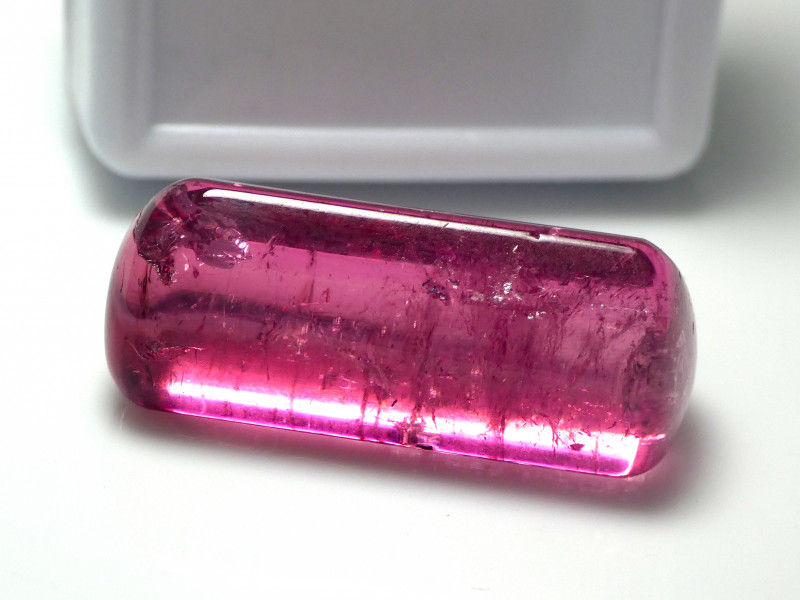
Rubellite Formation & Sources
Rubellite forms like all tourmalines, crystallizing from groundwater containing dissolved elements that settles into empty spaces inside igneous rocks and then evaporates. Usually miners find rubellites in pegmatites.
The rock around rubellite can also weather away, allowing rubellite crystals to break off and travel into alluvial deposits.
Mining Locations
Where does rubellite tourmaline come from? Significant locales for gem-quality rubellite are:
Afghanistan
Argentina
Austria
Brazil
Italy
Madagascar
Mozambique
Myanmar
Nigeria
Russia
USA (Maine)
Now, what is rubellite worth?
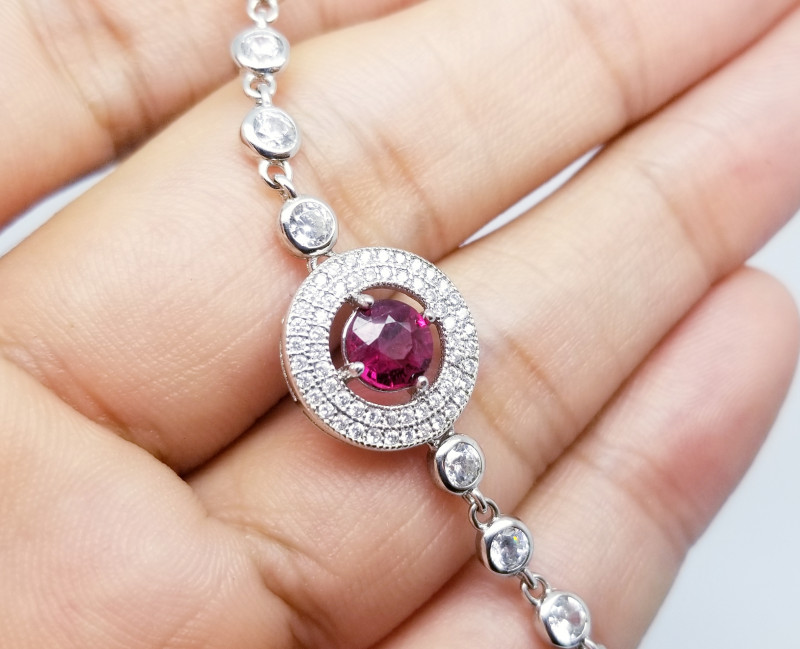
Rubellite Price & Value
Though rare and popular, rubellite has a broader price range for different budgets than other pricey tourmalines.
The rubellite tourmaline prices for good-quality, faceted red gems:
0.5 to 1 carat: $30 to $250 per carat
1 to 5 carats: $40 to $500 per carat
5+ carats: $40 to $650 per carat
Now the price-per-carat ranges for good-quality, faceted pink rubellite gems:
0.5 to 1 carat: $30 to $150 per carat
1 to 5 carats: $60 to $600 per carat
5+ carats: $60 to $550 per carat
Next, cat’s eye rubellite cabochon price ranges:
0.5 to 1 carat: $35 to $100 per carat
1 to 5 carats: $35 to $200 per carat
5+ carats: $35 to $400 per carat
The best faceted rubellite gemstones can reach $1,000 per carat.
Facetable, raw rubellite tourmaline crystals are around $10-$30 per carat at wholesale.
Lastly, we’ll discuss gemstone care.
Rubellite Care and Maintenance
Rubellite is durable enough for everyday wear. You may want protective settings in a more vulnerable rubellite tourmaline ring, though, especially if you’re wearing it regularly (like an engagement ring).
All that said, rubellites with filling treatments or lots of inclusions are more fragile. These stones are sensitive to heat and more prone to breakage, so avoid mechanical cleaning systems (e.g. ultrasonic or steam).
Rubellites with heat and/or irradiation treatments are not fragile like those that have been oiled, filled, or dyed.
Overall, keep your rubellite away from:
Intense heat (including storing in direct sunlight)
Sudden temperature changes
Harsh chemicals
Clean rubellite with a soft toothbrush, lukewarm water, and mild soap. Store it away from other gems.
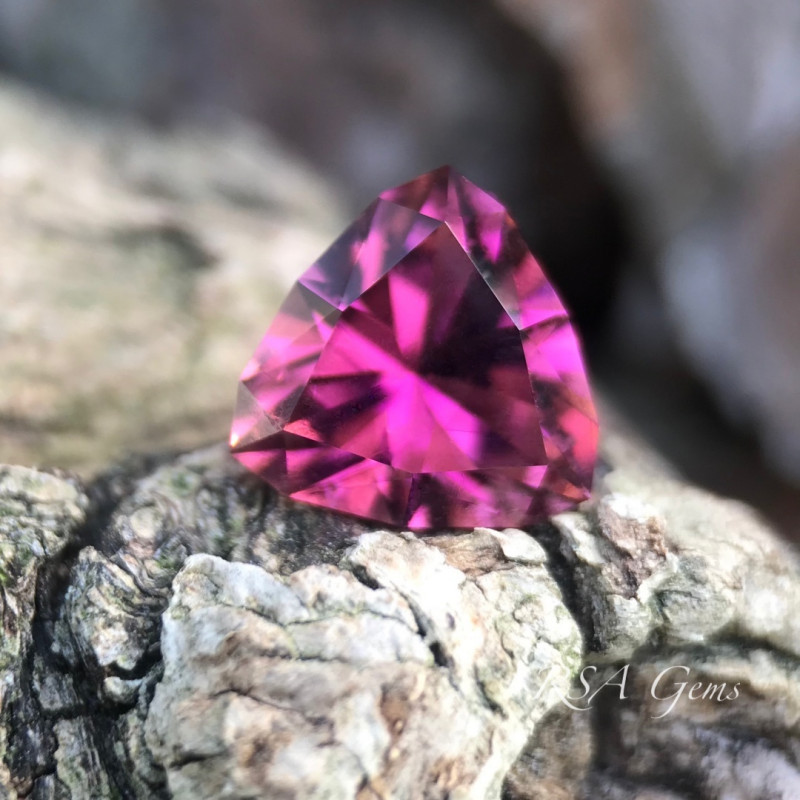
Ready to Radiate with Rubellite?
Among all tourmalines, rubellite is only second in value and popularity to Paraiba tourmaline. This scarlet stone has earned its place among top gems, besides the ranks of its mistaken “twin” ruby.
Forget ruby slippers and follow your yellow brick road in some stunning rubellite jewelry!
Search the Gemstone Encyclopedia
Related Auctions
Related Articles
Originally the Birthstones or gemstones were associated with a zodiac sign or the month of a individuals birth. Find out what your stone is and view the stones we have for sale
8th Feb 2021
There are dozens of quartz and chalcedony gems with various colors and patterns. Learn all about quartz properties and every type of quartz, from amethyst and agate to plasma and phantom quartz!
15th Oct 2020
Hackmanite is a pink to violet sodalite gem known for its unique color-change and luminescence. Learn why hackmanite is special, from its rare qualities to the types of hackmanite jewelry available.
28th Mar 2018
Latest Articles
Stibiotantalite is a rare tantalum mineral sometimes found as stunning yellow to orange gems. Discover the history, properties, prices, and uses of stibiotantalite gemstones in this complete guide.
21st Jan 2025
Milarite is a white, green, or yellow beryllium silicate in the milarite-osumilite group. Faceted gems are rare but stunning. Discover the history, properties, prices, and benefits of milarite gems!
6th Jan 2025
Friedelite is an uncommon pink, red, or brown manganese silicate mineral best known from New Jersey and South Africa. Learn the prices, properties, uses, and history of friedelite gemstones.
23rd Dec 2024
Article Categories
How To's is where you will find helpful articles from gem Rock Auctions on how to cut gemstones, select gemstones and buy gemstones.
9 Articles





